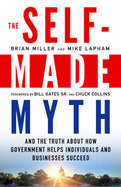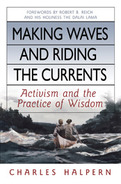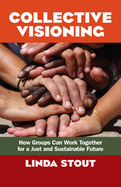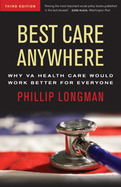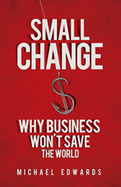2004
Garrison traces the roots of the American empire to the very beginnings of the republic, in particular to the historic willingness of United States' to use military might in the defense of two consistent --- if sometimes contradictory --- foreign policy objectives: protection of American commercial interests and promotion of democracy.
How long can the American empire last? Garrison looks at American history within the context of the rise and fall of empires and argues that the U. S. can gain important insights into durability from the Romans. He details the interplay between military power, political institutions, and legal structures that enabled the Roman empire at it's apogee to last for longer than America has as a country.
But the real question is, what kind of empire can and should America be? As the sole superpower, America must lead in shaping a new global order, just as after World War II Roosevelt and Truman took the lead in shaping a new international order. That international order is now crumbling under the pressures of globalization, persistent poverty, terrorism and fundamentalism. Garrison outlines the kinds of cooperative global structures America must promote if its empire is to leave a lasting legacy of greatness. Garrison calls for Americans to consciously see themselves as a transitional empire, one whose task is not to dominate but to catalyze the next generation of global governance mechanisms that would make obsolete the need for empire. If this is done, America could be the final empire.
-
Asserts that America has already made the transition from republic to empire
-
Asks what kind of empire America can and should be, suggesting that America should consciously see itself as a new kind of empire, one that will work to make the notion of empire obsolete
-
Written by the President of the State of the World Forum, a global network whose members include such distinguished figures as Mikhail Gorbachev, Oscar Arias, George Schultz, Jane Goodall, and Elie Weisel
2012
Exposes the damage caused by the myth of the "self-made man" and reveals how wealth is actually created.
- Exposes the damage to our political discourse and policy choices caused by the myth of the "self-made man"
- Offers testimony from a variety of business leaders about the full range of contributions to their success
- Spells out actions we must take to lay the foundation for a renewed prosperity in America
The Self-Made Myth challenges the by-your-own-bootstraps narrative enshrined in American tradition and beloved by antigovernment activists to offer a more holistic view of the success of business leaders and entrepreneurs. While acknowledging the importance of hard work, creativity, and leadership, it highlights several crucial, often unrecognized factors, with a particular emphasis on the ways government and society help individuals: public education, research and development grants, social services, roads and highways, laws and regulations that establish a stable business environment, and many more.
Miller and Lapham explore the historic roots of the self-made myth and reveal the societal damage it continues to cause. They present profiles of business leaders who, in their own words, identify the kinds of support and assistance that were crucial to their success, including Warren Buffett, Ben Cohen of Ben and Jerry's, New Belgium Brewery's Kim Jordan, and philanthropist, filmmaker, and heiress Abigail Disney. They also disprove the arguments of individuals such as Donald Trump and Ross Perot who have helped perpetuate their own self-made success myths.
How we view the creation of wealth and individual success shapes our choices on taxes, regulations, public investments in schools and vital infrastructure, the legitimacy of extravagant CEO pay, and more. The Self-Made Myth acknowledges and celebrates the truth of society's contribution. It takes a village to raise a business-it's time to recognize that fact.
"It is critical to change the conversation about how wealth is created, who creates it, and the role of government, and this book does that effectively and importantly. And it couldn't be more timely. I urge you to read this book and get engaged in the debate about progressive taxes."
-Bill Gates Sr.
This book is about working for a more just, compassionate, and sustainable world while cultivating the wisdom that supports and deepens this work.
Charles Halpern is a social entrepreneur with a remarkable record of institutional innovation. He founded the Center for Law and Social Policy, the nation's first public interest law firm, litigating landmark environmental protection and constitutional rights cases. As founding dean of the new City University of New York School of Law he initiated a bold program for training public interest lawyers as whole people. Later, as president of the $400 million Nathan Cummings Foundation, he launched an innovative grant program that drew together social justice advocacy with meditation and spiritual inquiry.
In his years of activism, he had a growing intuition that something was missing, and he sought ways of developing inner resources that complemented his cognitive and adversarial skills. These explorations led him to the conviction that what he calls the practice of wisdom is essential to his effectiveness and well-being and to our collective capacity to address the challenges of the 21st century successfully.
With wit and self-deprecating humor, Halpern shares candid and revealing lessons from every stage of his life, describing his journey and the teachers and colleagues he encountered on the way a cast of characters that includes Barney Frank and Ralph Nader, Ram Dass and the Dalai Lama. Making Waves and Riding the Currents vividly demonstrates the life-enhancing benefits of integrating a commitment to social justice with the cultivation of wisdom. It is a real-world guide to effectively achieving social and institutional change while maintaining balance, compassion, and hope.
2011
Stout shows, in practical terms, how to bring a group together, build trust, ensure that each and every voice is heard, create a positive vision, and develop an action plan that leverages everyone's abilities to bring that vision to fruition. Used successfully by more than 120 organizations—and illustrated here by dozens of practical examples and exercises—this process creates hope for change, even among those who've stopped believing that change is possible. This comprehensive guide will serve as a template for anyone seeking to create a better, more just tomorrow.
-
Shows activists how to develop an inclusive, inspiring vision of the future they want to create
-
Offers a process that guarantees the voices of marginalized people are heard and enables people of all backgrounds to work together with honesty, passion, commitment, and joy
-
Filled with examples and exercises taken from Linda Stout's decades of organizing
All of us want a future that's promising and a way to get there. For decades, activists and community groups have worked to create equitable solutions. Why then are so many of us disappointed at the results?
Despite sincere and well-intentioned efforts, organizers often fall short in creating groups in which people from all backgrounds feel comfortable speaking up. And while progressives are good at articulating what they're against, for a variety of reasons they have a tougher time getting specific about what they're for--creating a positive, energizing vision.
Linda Stout, a lifelong agent of social justice, introduces a process designed to ensure that all voices are heard, an inspiring vision of the future is agreed on, and an action plan is developed that leverages everyone's diverse talents and abilities. Used successfully by over 120 organizations, it creates hope for change among those who've stopped believing change is possible.
Stout lays out the extensive and innovative prework that must be done to build trust and openness before any kind of meeting is held--a distinctive feature of collective visioning. She describes creative approaches for encouraging people to share their histories and most deeply held personal values, and she explains how understanding why each person is drawn to the work is vital in designing action strategies that build on people's particular strengths. She illustrates her points with inspiring stories of what collective vision can accomplish, drawn from her decades of committed activism.
Collective Visioning is a complete guide for leaders seeking to create inclusive movements that work from a place of hope to create a better, more just tomorrow.
2012
-
Tells the remarkable story of how the Department of Veterans Affairs (VA) health-care system transformed itself from a national scandal to a national model
-
Explains the multiple advances and innovations that have enabled the VA to provide an unparalleled level of service
-
Recommends how to adapt and expand the VA model to the entire country
Expanding health-care coverage to uninsured Americans is a laudable goal, but the problems in our system go much deeper than that. The way that health care is delivered in this country is deeply flawed. Studies consistently show Americans spend more per person on health care than the people in any other country with far poorer outcomes. For example, Costa Ricans spend a fraction of what we do and live a year longer.
But a solution to America's health-care crisis does exist. It's not a theoretical alternative that's never been implemented. And you don't have to go to a foreign country to see it. It's already up and running, with hospitals and clinics located in every state. It's the VA health-care system, the largest integrated system in the United States.
In Best Care Anywhere, Phillip Longman tells the full story of the VA's amazing turnaround. Once a regular source of nationally reported scandals, the VA system is now hailed for its exceptional safety record, its use of evidence-based medicine, its health promotion and wellness programs, and its unparalleled adoption of electronic medical records and other information technologies. And it's the only health-care provider in the United States whose cost per patient has been holding steady as others' skyrocket.
The story of how and why the VA became the benchmark for quality medicine in the United States suggests that vast swaths of what we think we know about health, health care, and medical economics are just wrong. Longman suggests ways that this extraordinarily cost-effective model can be adapted so that a VA level of health care could be available to everyone.
New to this edition are an analysis of so-called Obamacare and the Ryan proposal to privatize Medicare. It also describes the results achieved when the VA electronic record system was implemented in West Virginia and Texas and features completely updated statistics and research, including 2011 cancer studies by Harvard University that prove VA cancer patients outlive cancer patients in traditional health care.
- Tells the remarkable story of how the Department of Veterans Affairs (VA) health-care system transformed itself from a national scandal to a national model
- Explains the multiple advances and innovations that have enabled the VA to provide an unparalleled level of service
- Recommends how to adapt and expand the VA model to the entire country
Expanding health-care coverage to uninsured Americans is a laudable goal, but the problems in our system go much deeper than that. The way that health care is delivered in this country is deeply flawed. Studies consistently show Americans spend more per person on health care than the people in any other country with far poorer outcomes. For example, Costa Ricans spend a fraction of what we do and live a year longer.
But a solution to Americas health-care crisis does exist. Its not a theoretical alternative thats never been implemented. And you dont have to go to a foreign country to see it. Its already up and running, with hospitals and clinics located in every state. Its the VA health-care system, the largest integrated system in the United States.
In Best Care Anywhere, Phillip Longman tells the full story of the VAs amazing turnaround. Once a regular source of nationally reported scandals, the VA system is now hailed for its exceptional safety record, its use of evidence-based medicine, its health promotion and wellness programs, and its unparalleled adoption of electronic medical records and other information technologies. And its the only health-care provider in the United States whose cost per patient has been holding steady as others skyrocket.
The story of how and why the VA became the benchmark for quality medicine in the United States suggests that vast swaths of what we think we know about health, health care, and medical economics are just wrong. Longman suggests ways that this extraordinarily cost-effective model can be adapted so that a VA level of health care could be available to everyone.
New to this edition are an analysis of so-called Obamacare and the Ryan proposal to privatize Medicare. It also describes the results achieved when the VA electronic record system was implemented in West Virginia and Texas and features completely updated statistics and research, including 2011 cancer studies by Harvard University that prove VA cancer patients outlive cancer patients in traditional health care.
2010



